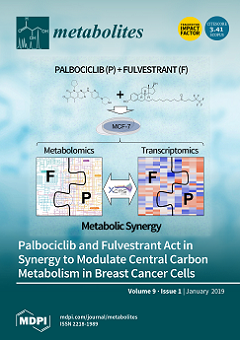Sepsis, the clinical manifestation of serious infection, may disturb normal brain development, especially in preterm infants with an immature brain. We hypothesized that neonatal sepsis induces systemic metabolic alterations that rapidly affect metabolic signatures in immature brain and cerebrospinal fluid (CSF). Cesarean-delivered preterm
[...] Read more.
Sepsis, the clinical manifestation of serious infection, may disturb normal brain development, especially in preterm infants with an immature brain. We hypothesized that neonatal sepsis induces systemic metabolic alterations that rapidly affect metabolic signatures in immature brain and cerebrospinal fluid (CSF). Cesarean-delivered preterm pigs systemically received 10
9 CFU/kg
Staphylococcus epidermidis (SE) and were provided total parenteral nutrition (
n = 9) or enteral supplementation with bovine colostrum (
n = 10) and compared with uninfected pigs receiving parenteral nutrition (
n = 7). Plasma, CSF, and brain tissue samples were collected after 24 h and analyzed by
1H NMR-based metabolomics. Both plasma and CSF metabolomes revealed SE-induced changes in metabolite levels that reflected a modified energy metabolism. Hence, increased plasma lactate, alanine, and succinate levels, as well as CSF lactate levels, were observed during SE infection (all
p < 0.05, ANOVA analysis).
Myo-inositol, a glucose derivative known for beneficial effects on lung maturation in preterm infants, was also increased in plasma and CSF following SE infection. Enteral colostrum supplementation attenuated the lactate accumulation in blood and CSF. Bloodstream infection in preterm newborns was found to induce a rapid metabolic shift in both plasma and CSF, which was modulated by colostrum feeding.
Full article






